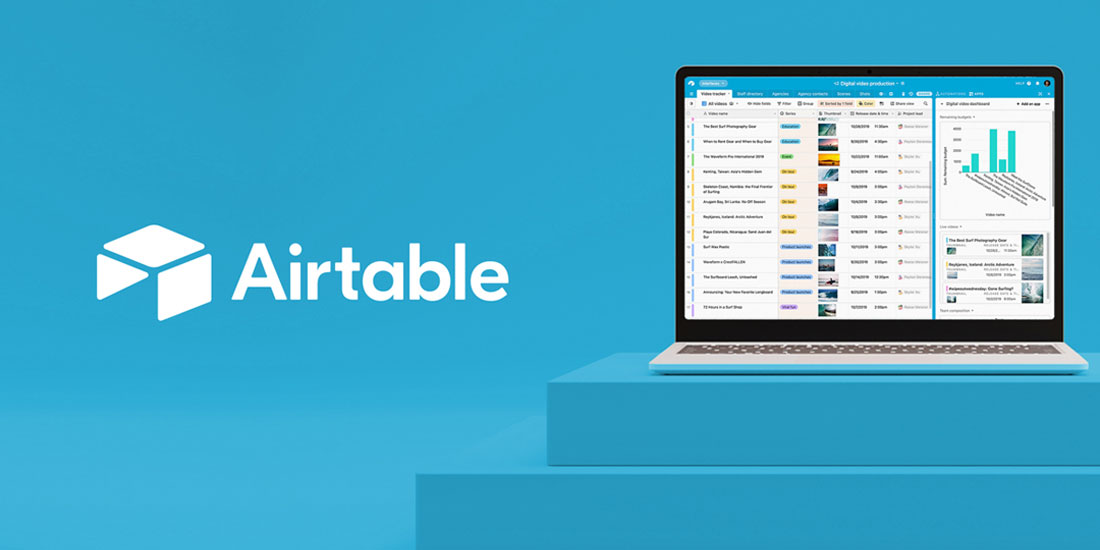
by Reema Duggal | Mar 11, 2024
In the fast-paced world of digital transformation, having a reliable and insightful thinking partner can significantly enhance day to day processes and creative endeavors. With its vast reservoir of knowledge and adaptive learning and search capabilities, ChatGPT stands out as a great choice. 5 reasons why for me:
Diverse Knowledge Base
Drawing from a comprehensive database, ChatGPT provides broad perspectives on a multitude of topics including: technical details in digital transformation, solving coding problems, research on eLearning and eCommerce. This breadth of knowledge facilitates informed work.
Adaptability
ChatGPT excels in adapting to specific industry needs. It learns from interactions to better align with objectives and communication style, ensuring that the provided solutions are aligned to requirements.
Unparalleled Accessibility
ChatGPT is available 24/7, ready to assist with any query or challenge. Whether it’s early morning or late night brainstorming, it’s always just a few clicks away.
Efficiency and Speed
In business, time is money. ChatGPT offers rapid responses that don’t compromise on quality, enabling all work to move at light speed.
Cost-Effective Collaboration
Utilizing ChatGPT as a thinking partner reduces the need for extensive research teams and consultants, offering a cost-effective solution that small businesses and startups can use to their advantage.
———-
In conclusion, ChatGPT is more than just a tool; it’s a great thinking partner that brings intelligence, adaptability, and a wealth of information to every interaction. I work with it a dozen times a day!

by Reema Duggal | May 29, 2023
originally published on WeTech Alliance
What is a Low Code Tool?
Low-code / no-code tools are a type of software development platform that allows Start-up Founders to create business/technology solutions without having to write code.
These platforms are becoming increasingly popular due to their ease of use and ability to quickly create applications, without having to hire software developers to build Minimum Viable Products (MVP’s) and sometimes full-scale applications.
What Can You Build With Them?
Not sure what you can build with low-code / no-code tools? Here are seven examples:
- Membership Sites – sell your services, courses, time to your audience and collect regular payments.
- Online Stores – sell your products around the world.
- Marketplaces – bring buyers and sellers together in your marketplace platform.
- Tracking Systems – track customers, applicants, trainees, volunteers, or donors throughout their journey.
- Event Planning – plan events and manage team tasks to get things done.
- Asset Management – manage digital assets, brand identity, videos, images, anything!
- Business Process Applications – automate your processes and speed up service and payments.
But there are many more possibilities, once you define your requirements and find the right platform.
How Technical Do You Have To Be To Use Low Code / No Code Tools?
Not that technical at all. But you do have to be willing to learn how applications are built and work, including:
- Defining business processes
- Defining user journeys
- Defining the features / functions you need / your users need.
- Defining the data you need / your users need.
- Finding the right application platform.
Great news. That’s exactly what you are going to learn in the Roadmap TO MVP Program.
What Are The Benefits Of Low Code Tools
Low code tools provide a number of advantages over traditional coding. Five advantages are:
- Easier To Learn – Once you understand the data, logic, and presentation layers – it is often straightforward to build your application. You do not have to learn coding languages or program the application. Most low-code / no-code tools provide templates to get started and learn the fundamentals.
- Cost Effective – Many low-code / no-code tools have free starter trials and/or a low monthly starting fee. Usually you can start to build your MVP with an investment of under $100.
- Speed To Market – Think of low-code / no-code tools as something that already has many of the fundamental building blocks built to get an application built. You will configure it with your brand identity, flows, and data. This makes building time much less than traditional software development.
- Require Less Resources In The MVP Stage – You will be the primary resource in building your application. You won’t need software developers at the beginning. Once your MVP is built, launched, and tested in the market – you will have a solid understanding of where you want to go next. Then you can bring in more resources as you scale.
- Pivot Easily – Because of ease of configuration and speed in building, you can change your application as needed once customer/user feedback comes in. You will not have to wait for external resources to be available to you.
Are There Any Limitations of Low Code / No Code Tools?
Low code tools have some limitations. These tools are not suitable for highly complex applications. They are ultimately not as flexible as traditional software development as they require the use of a predefined set of features. Finally, they are limited in terms of scalability.
But they are great for quickly creating applications that you can take to market and test. Even if the application needs to evolve to using traditional software development at a later date, you will have:
- Clearly defined all your requirements
- Built and tested a Minimum Viable Product
- Have the knowledge and expertise to easily work with software developers to take it to the next level
Conclusion
Low-code / No-code tools are a great way to quickly create applications without having to write code. Their advantages will help you get to market in record time. And during this journey you will build a set of skills that will help you grow your business in the long term.
————————————
written by Reema Duggal, Presenter and Facilitator of Roadmap To MVP 2023

by Reema Duggal | Apr 8, 2023
Website builders have become increasingly popular in recent years. They offer a great way to create a professional and polished website without the need to learn to code. Let’s look at five I think are great to work with:
Carrd
Carrd is a one page website builder. It is a simple solution that allows users to create a website quickly and easily. It offers an intuitive drag and drop interface and also allows users to add custom HTML and CSS to customize their website.
Pros:
- Easy to use: simple drag-and-drop interface that makes it easy to create a one page website without any coding knowledge.
- Professional designs: nice selection of modern and professional templates, allowing you to create a website that looks great
- Inexpensive: free but limited, pro plan is USD $19 per year for 10 sites
Cons:
- Limited customization options: Weebly provides some customization options, but compared to other website builders, these are quite limited.
- Limited SEO tools: Weebly’s SEO tools are quite basic, so you might need to look into additional tools to optimize your website.
- Has knowledgebase, but very limited support
Wix
Wix is a website builder that offers an easy-to-use drag-and-drop interface. It also provides a wide range of customization options and a multitude of template designs to choose from. With Wix, you can create a professional website quickly and easily, with no coding required.
Pros:
- Easy to use: simple drag-and-drop interface that makes it easy to create a multi-page website without any coding knowledge.
- Customizable: Wix provides a wide range of customization options, allowing you to create a unique website that fits your style and vision.
- Template designs: Wix has a huge selection of template designs, ranging from business and eCommerce websites to personal blogs and portfolios.
Cons:
- Limited design freedom: Wix limits your design freedom, as you can only use the templates and customization options that it provides.
- Limited features: Wix has some features, such as analytics and SEO tools, but they are quite limited compared to other website builders.
- Limited scalability: Wix is great for small websites, but as your website grows, it can be difficult to scale with Wix, and you might need to look into other options.
Squarespace
Squarespace is another popular website builder, offering a wide range of templates and customization options. It also provides powerful eCommerce tools and analytics, making it a great choice for online stores and businesses.
Pros:
- Professional designs: Squarespace has a selection of modern and professional templates, allowing you to create a website that looks great and is easy to navigate.
- Powerful eCommerce tools: Squarespace provides powerful eCommerce tools, such as a shopping cart, payment gateways, and inventory tracking.
- Analytics: Squarespace offers detailed analytics, allowing you to track the performance of your website and make changes accordingly.
Cons:
- Expensive: Squarespace’s plans can be quite expensive, and you might need to invest in additional features to get the most out of the platform.
- Limited customization options: Squarespace provides some customization options, but compared to other website builders, these are quite limited.
- Limited SEO tools: Squarespace’s SEO tools are quite basic, so you might need to look into additional tools to optimize your website.
WordPress
WordPress is an open-source platform that is used by millions of websites around the world. As of January 2023, WordPress runs over 800 million sites globally, representing 43% of the global market. It allows you to create a website quickly and easily, and it also provides plenty of customization options and plugins.
Pros:
- Customizable: WordPress allows you to customize your website with themes, plugins, and widgets.
- Easy to use: WordPress has a simple drag-and-drop interface that makes it easy for anyone to create a website.
- SEO friendly: WordPress is designed to be SEO friendly, allowing you to optimize your website for search engine rankings.
Cons:
- Hosting: You will need to purchase hosting for your WordPress website separately
- Security: WordPress is open-source, which means that it is vulnerable to security threats.
- Expensive: There are free themes, but to make WordPress really work you, professional themes are required. My favourite is from Elegant Themes and runs about US $250 for a lifetime subscription
Webflow
Webflow is a visual website builder that allows users to create websites with a drag and drop interface. It is designed for designers and allows infinite design customization. It also allows users to take advantage of more advanced features such as custom CSS and JavaScript.
Pros
- Flexibility: provides a lot of flexibility for creating a website. Combination drag and drop with sophisticated fine tuning of details
- No Need For Plugins: Webflow comes with many features already built in – instead of extra plugins
- Powerful features: integration with other data sources such as Airtable
Cons
- Lack of code customizations. If you want to customize websites at the code level, it is not possible with Webflow.
- Not good for Ecommerce: while fully featured, ecommerce can get clunky using webflow
- Expensive: plans range from $12 to $45 per month – no free plan
When it comes to choosing the best website builder, there is no one-size-fits-all answer. Every website builder has its own pros and cons, and the best one for you will depend on your needs and preferences. Whether you’re looking for an easy-to-use drag-and-drop interface, powerful eCommerce tools, or SEO optimization, there is a website builder out there that will meet your needs.

by Reema Duggal | Sep 29, 2022
I’ve worked in the tech industry a long time. I’ve worked with enterprise applications, oen source applications, productivity applications, and a million plugins.
Recently, as the low code movement gains steam (and I lead the Roadmap To MVP Programs for women entrepreneurs with regional Innovation centers WEtech and Haltech, some notable software players stand out. Today, I need to talk about my conversion to Airtable.
Their slogan is:
Build A Better Way To Work
Airtable’s intuitive yet powerful platform gives everyone the flexibility to create their own solution and make work flow faster.
5 Things I Love
- It’s like Excel on steroids. It is a database, but instead of having to write SQL code and queries, you add your column headers as fields, enter your data in rows, link records in different tables, and then organize it in every way possible. I am realizing sometimes now when in Excel or Google Sheets – I’m getting frustrated that I cannot view my data in single record, kanban, or cards views. Sometimes, I find myself copying excel data into an empty Airtable table just so I can really interact with the information and understand it.
- Gather data through Airtable Forms in minutes. It’s just another view. Just like above, create your column headers as fields in your main table, create another view called Form – and add your logo. Drag and drop any fields in the form out that you do not want to show, share the form with a link or embed it, and Go! It takes mere minutes.
- Automations and Extensions greatly improve workflow. When a record is added, send an email, or send a slack message, or append a row in Google Sheets. So many ways to improve workflow, simplify life, and try new processes in very little time.
- On a Pro Plan, one year of backups. Well, that is a no brainer. You can always pull a snapshot back into your database if something goes wrong. However, I do keep the schema backed up separately.
- Airtable integrates with everything. It has some great pre-built out of the box connectors, but with Zapier or Make – it can integrate with a lot of other software. Currently, it seems to be leading – with a ton of companies vying to show they integrate with Airtable.
Give it a try. The Airtable Community is great. Lots of help.
www.airtable.com




